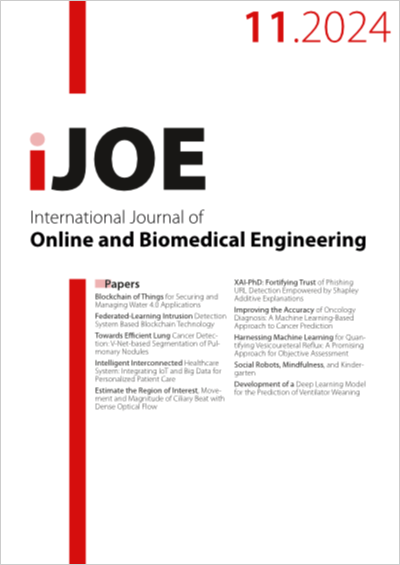Harnessing Machine Learning for Quantifying Vesicoureteral Reflux: A Promising Approach for Objective Assessment
DOI:
https://doi.org/10.3991/ijoe.v20i11.49673Keywords:
Quantifying Vesicoureteral RefluxAbstract
In this study, we evaluated the performance of various machine-learning models on multiple datasets labeled GR1, GR2, GR3, GR4, and GR5. We assessed the models using a range of evaluation metrics, including AUC, CA, F1, precision, recall, MCC, specificity, and log loss. The models examined were logistic regression, decision tree, kNN, random forest, gradient boosting, neural network, AdaBoost, and stochastic gradient descent. The results indicate that all models consistently demonstrated outstanding performance across all datasets, with most achieving perfect scores in all metrics. The models exhibited high accuracy and effectiveness in accurately classifying instances. Although random forests displayed slightly lower scores in some metrics, theyi still maintained an overall high level of accuracy. The findings highlight the models’ ability to effectively learn the underlying patterns within the data and make accurate predictions. The low log loss values further confirmed the models’ precise estimation of probabilities. Consequently, these models possess strong potential for practical applications in various domains, offering reliable and robust classification capabilities.
Downloads
Published
How to Cite
Issue
Section
License
Copyright (c) 2024 Muhyeeddin Alqaraleh, Mowafaq Salem Alzboon, Ahmad Abuashour, Mohammad Subhi Al-Batah, Mutaz Abdel Wahed, Firas Hussein Alsmadi

This work is licensed under a Creative Commons Attribution 4.0 International License.


